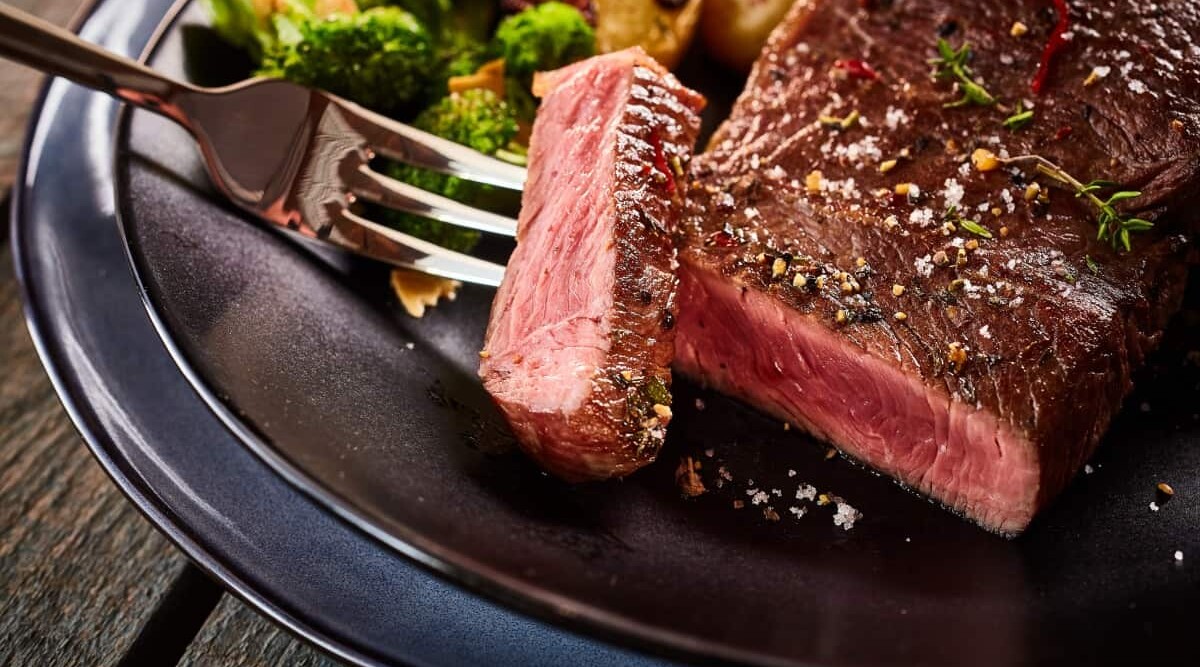
The best thickness for a steak is 1.5 inches because it allows for the highest amount of control over the final doneness level while still being able to build a flavorful crust. Thinner than 1.5 inches cooks through too quickly, going past your chosen doneness in the center before you can sear a good crust. Thicker than 1.5 inches risks burning the outside before you can get the center to your desired doneness.
One of the key lessons I learned about steak many years ago is how thick my steaks should be. There was a time when I just thought steak was steak, and a thick cut was just bigger but essentially the same. It turns out the thickness makes a big difference.
To help you with your steak shopping, I will share with you today what I’ve learned about thick steaks, why thickness matters, and, most importantly, I’ll reveal the perfect best thickness for steak.
I will also teach you how to cook a steak of perfect thickness like a boss.
And, because no good steak should be left behind, I’ll also share my step-by-step instructions and helpful tips to cook any steak that’s thicker or thinner than optimal.
Time to get to the thick and thin of it!
Key Takeaways
- Steak thickness matters because it affects cooking time, flavor, and crust development.
- The ideal thickness for steak is 1.5 inches, allowing for better control over doneness and crust development.
- If a steak is too thin, it can be challenging to achieve a good sear, and the center may overcook.
- If a steak is too thick, it can result in an overcooked outer layer and a lengthy cooking time.
- Thicker steaks are generally better than thinner ones because they are easier to cook to perfection.
- Some steak cuts, like skirt steak and flank steak, are naturally thin and should be cooked accordingly.
- Regardless of thickness, there are tips and techniques below to help achieve a delicious steak every time.
Jump to:
- 1 Key Takeaways
- 2 Why Does Steak Thickness Matter?
- 3 The Ideal Steak Thickness
- 4 If Forced, Thicker is Always Better Than Thinner
- 5 Some Steaks Can Only Be Thin — What Then?
- 6 How to Cook a Perfect 1.5” Thick Steak
- 7 How to Cook a 2” or Thicker Steak
- 8 How to Cook a Thin Steak for the Best Results
- 9 Final Thoughts
Why Does Steak Thickness Matter?
Steak thickness matters because it impacts everything from cooking time to flavor and mouthfeel, plus whether you can build the best flavorful crust while cooking the center to the desired doneness you prefer.
Here’s the thing: Grocery stores want to make money. So, if they can cut a thick steak in half, now they have two medium-size steaks they can sell for more than a single steak. They win, and the public loses because most people are unaware of how thick a steak should be. They only know they’ve saved a few dollars.
And if you appreciate a delicious steak, you know it’s always worth it to shell out a bit more.
So, what is the best thickness for a steak? That’s coming up next.
The Ideal Steak Thickness
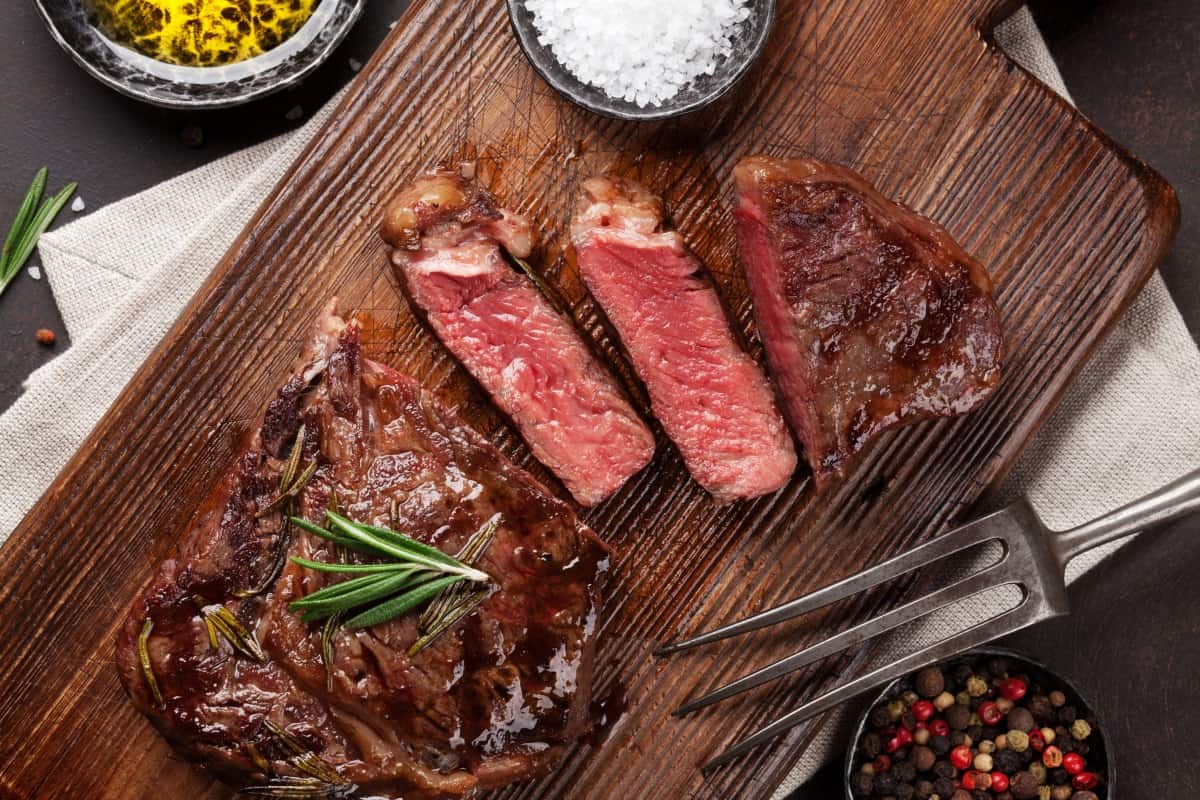
The ideal thickness for steak is 1.5 inches or 3.8cm. Chefs, pitmasters, and backyard barbecue experts are almost all in agreement on this, which is a rarity in grilling.
Why? Because thick-cut steak gives you better control over the doneness you want it cooked to.
Steak lovers tend to choose rare or medium-rare for tenderness and flavor. That means an internal temperature of about 130 °F at the core. But a perfectly cooked steak will also have a deeply dark, seared Maillard crust. This crust is BIG flavor and takes extreme heat and time to develop.
In a very thin steak, searing for the crust adds so much heat that it’s easy to overcook the center. Getting the center cooked right results in a pale and unappealing crust as it cooks so quickly, missing out on tons of flavor you would get from a great sear. Alternatively, get a good sear, and you will almost certainly overcook the center.
In a too-thick steak, having to cook for so long to get the center cooked right, often leads to a thick ring of medium-well to well-done meat on the outside, surrounding the perfectly medium-rare middle. The cooking time is just too lengthy.
In short, it’s much easier to cook a steak to order when it’s 1.5 inches thick. Enough time to create a deep, flavorful crust while gradually allowing the center to come to the exact temperature you’re after without letting it shoot past and without a thick, overcooked outer layer.
If Forced, Thicker is Always Better Than Thinner
Although it’s almost universally agreed that 1.5 inches is the ideal thickness for steak, sometimes you just can’t get a hold of one. What then? Is it better to go thicker or thinner than 1.5” if these are the only options?
We say, opt for the thicker steak. Here’s why.
If a Steak is Too Thin
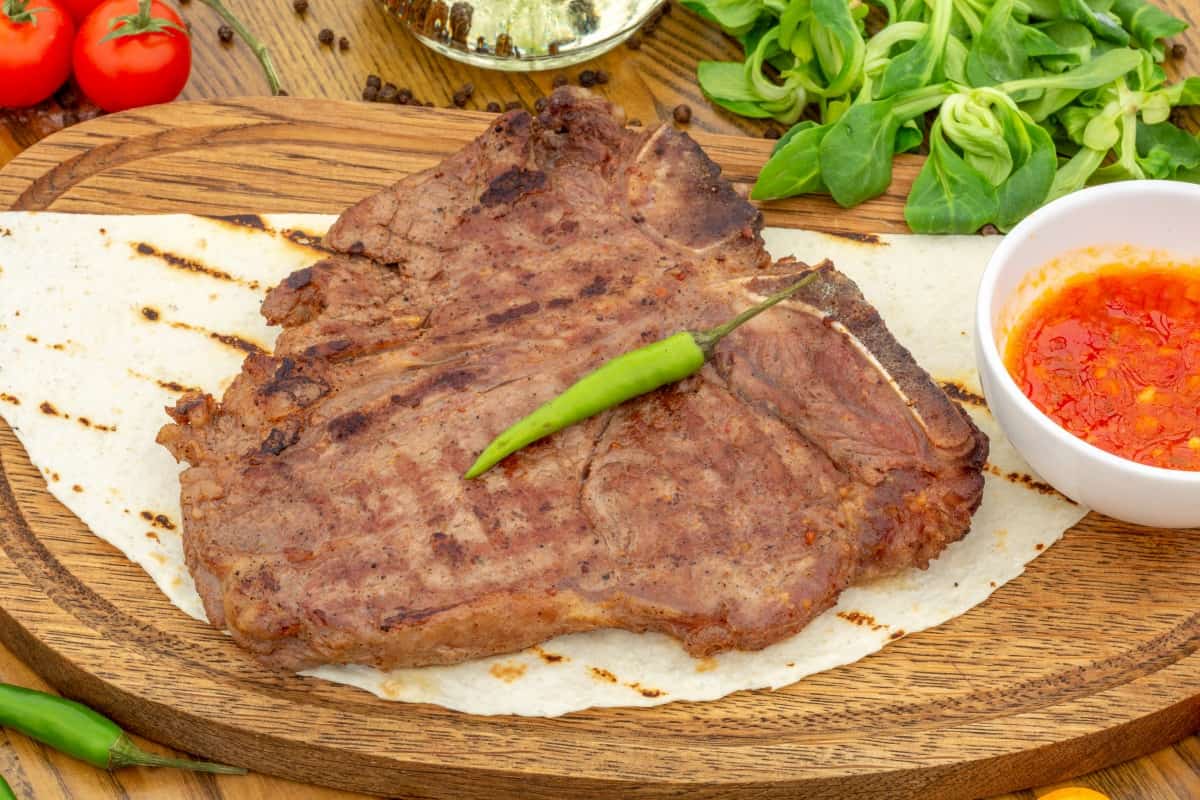
As discussed above, the outer layer of a steak should be dark and crusty, and the middle medium-rare. A thin steak will cook through in a hurry and go past medium-rare in the center way before a tasty crust has formed. And a thin steak has very little “middle” to speak of, anyway.
So while searing, it can be challenging to cook a thin steak to anything less than medium, and they may lack the amount of fat needed to render and infuse the steak with flavor while also tenderizing the meat.
If a Steak is Too Thick
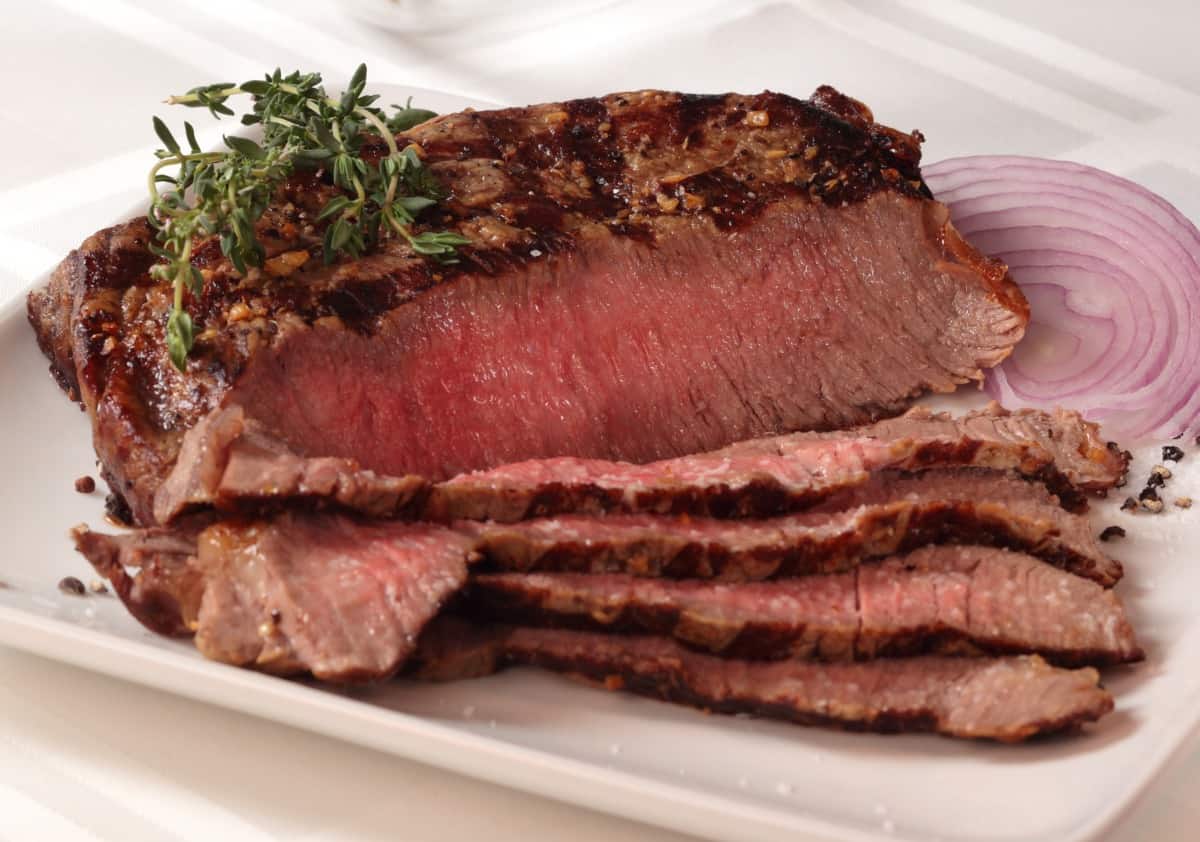
The risk with a thick steak is burning the outside before you get the middle to the right temperature and doneness you’re after. And if you’re one of those people who like a steak medium well or well done, you’ll find that extremely difficult to achieve with a thick steak.
But, if you have some patience and know the proper techniques, it is very possible to cook a steak over 1.5 inches thick perfectly and have it turn out delicious! More on this below.
Some Steaks Can Only Be Thin — What Then?
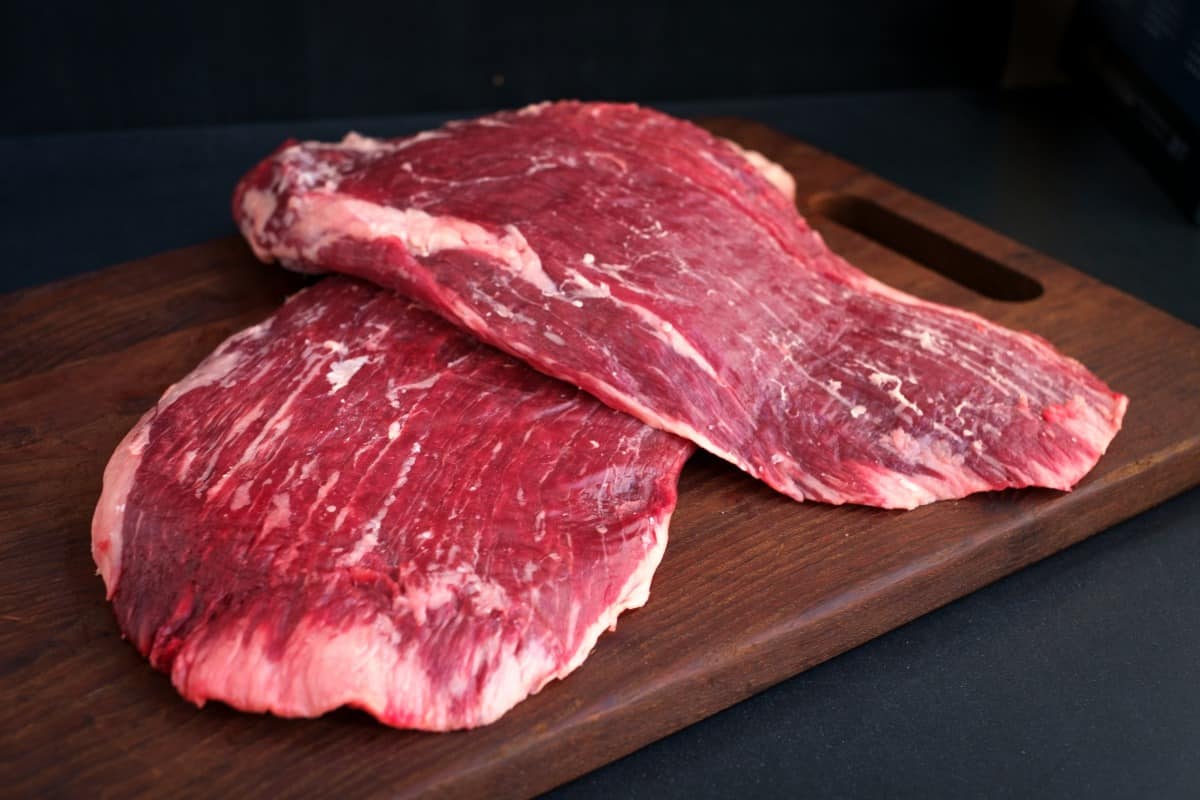
Some steak cuts, including skirt steak, hanger steak, and flank steak, are thin by their very nature. They can never be 1.5” thick because they don’t grow that thick inside the cow. Should you avoid them?
Heck no! It’s still steak, after all. You just have to go into it knowing they’re a little less forgiving.
Do your research, get prepped in advance, and follow a great recipe, and you’re golden. In fact, there are times when thinner steak is preferable, such as for fajitas and steak sandwiches.
How to Cook a Perfect 1.5” Thick Steak
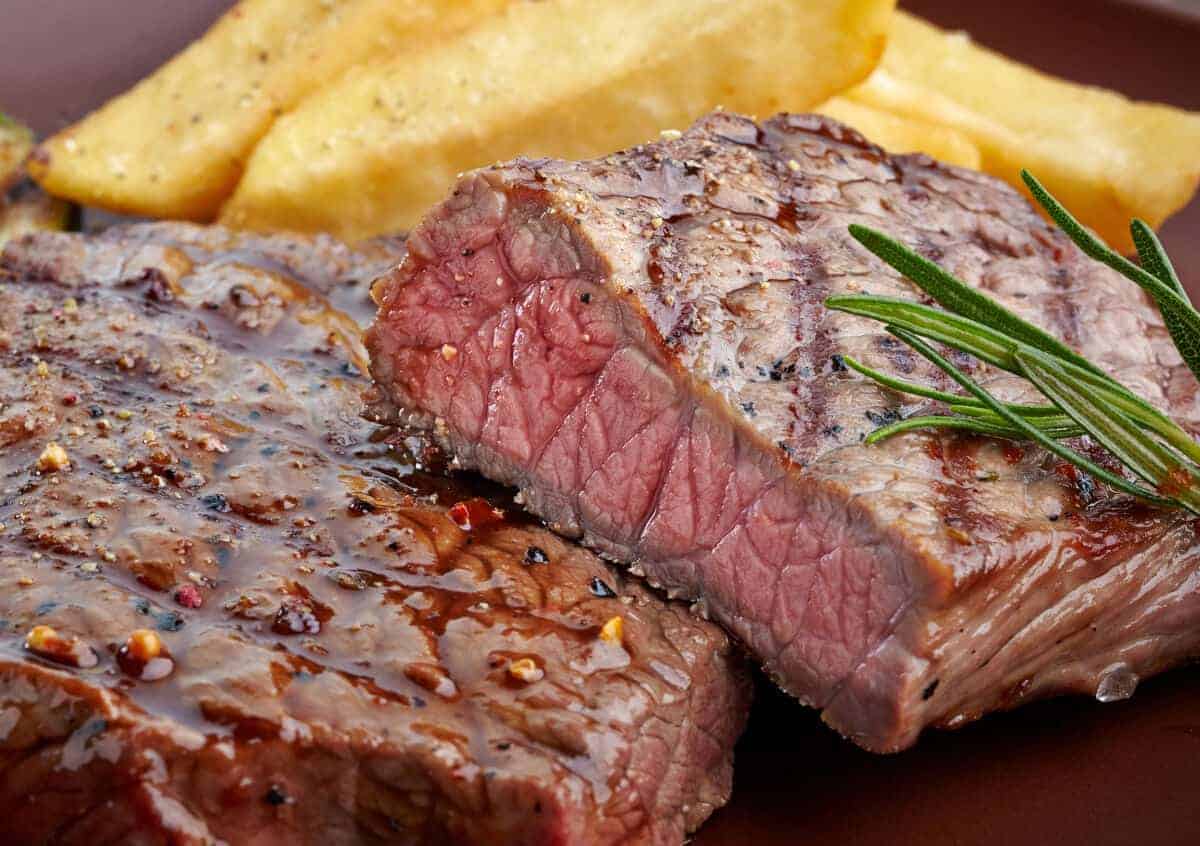
Have your perfect 1.5-inch steak ready? Here’s how to grill it to perfection; our aim is medium-rare and a beautifully seared exterior.
- Preheat your grill until it’s as hot as possible.
- While the grill heats up, season your steak, if desired, with 1 teaspoon of salt per pound of steak.
- Place the steak on your preheated grill.
- After 1-2 minutes on the grill, give the steak a quarter-turn (this creates restaurant-style grill marks and helps even out the sear) and leave for another 60 seconds.
- Flip the steak and move to a new part of the grate that hasn’t had any heat absorbed from it yet.
- Repeat step 4.
- Check the center of your steak with a meat thermometer inserted through the side of the cut until it reaches the center. Be sure it’s not touching any bone. The ideal temperature for medium-rare is about 130 °F. If necessary, continue flipping every minute or so until you’re approaching the target.
- Remove your steak from the grate when thermometer reads 125 °F, a few degrees below the target to compensate for carryover cooking.
- Rest your steak away from the heat for 7.5 minutes to allow the temperature across the steak to equalize, and for the juices to redistribute so they stay inside the steak when slicing and do not run out onto your plate.
Here are some tips to help nail a delicious 1.5-inch steak every time.
- Let your steak rest out of the fridge, if possible, before grilling and get closer to room temperature.
- Instead of table salt, use coarse or kosher salt for a crunchier crust.
- Cooking times will vary; keep your thermometer handy so as not to undercook or overcook your steak.
- Pat the surface dry before searing to avoid giving your steak a steam bath.
How to Cook a 2” or Thicker Steak
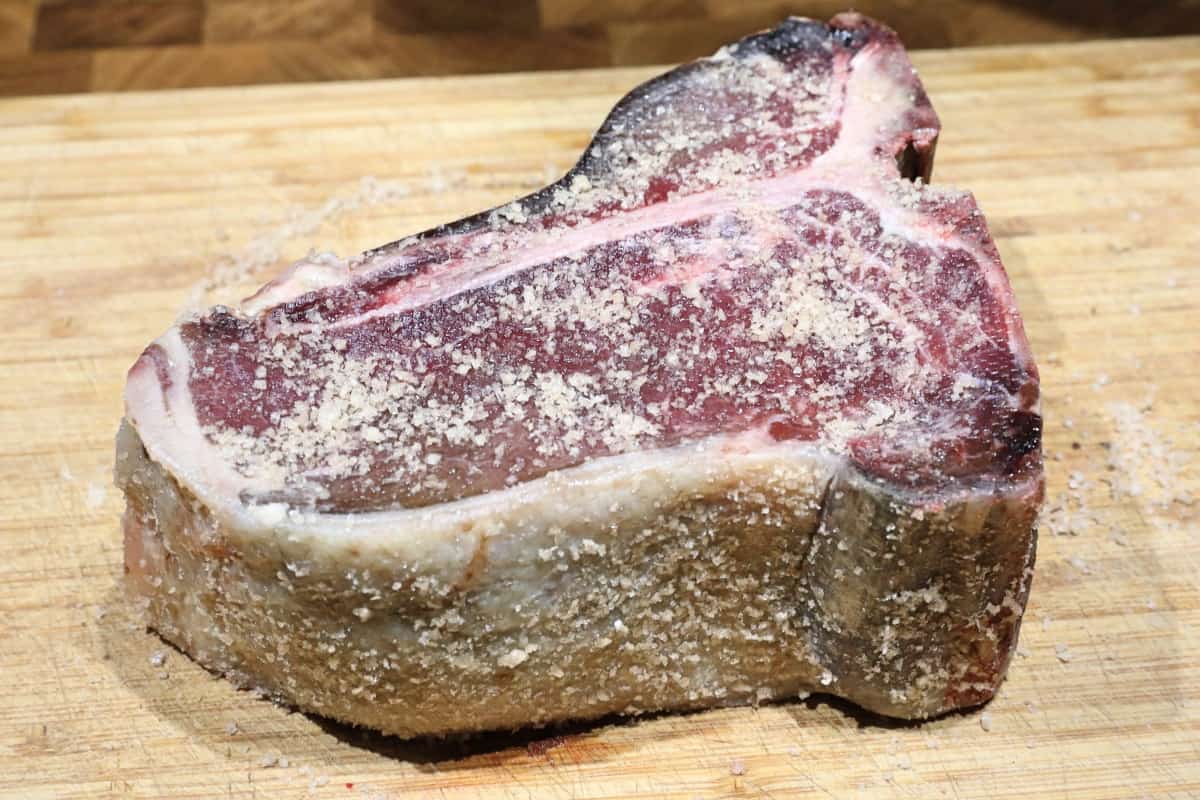
Couldn’t resist that extra thick cut? We get it! Follow these step-by-step instructions and enjoy.
- Set up your BBQ for two-zone grilling. This technique creates a hot zone for direct heat and a cooler zone for indirect heat. For charcoal, typically, you’ll bank it all to one side of the pit. For gas, only turn on the burner(s) on one side of the grill. For more detailed instructions, read our complete guide to two-zone grilling.
- While the grill heats up, season your steak, if desired.
- Place the steak on the direct heat side of your preheated grill.
- After 60 seconds or so, give the steak a quarter-turn (this creates restaurant-style grill marks and helps even out the sear) and leave for another 60 seconds.
- Flip the steak and move to a new part of the grate that hasn’t had any heat absorbed from it yet.
- Repeat step 4.
- Once both sides are seared, move the steak to the indirect heat side of the barbecue to continue cooking at a lower heat, slowly coming up to the chosen internal temp without burning the outside.
- Check the center of your steak with a digital probe thermometer inserted through the side of the cut until it reaches the center. Be sure it’s not touching any bone. The ideal temperature for medium-rare is about 130 °F. Remove your steak from the grate when thermometer reads a few degrees below the target to compensate for carryover cooking.
- Rest your steak away from the heat for 5 minutes per inch thickness (10 minutes for a 2-inch steak.)
To be sure you nail this magnificent steak, here are some tips to keep in mind (in addition to our tips for cooking a 1.5-inch steak we gave in the previous section).
- A leave-in digital grilling thermometer is your best bet for hitting your desired doneness without fail with thicker steaks.
- You can also try the “reverse sear” technique. In a nutshell, you’ll begin by cooking your steak on the indirect heat side of your grill until it approaches the target temperature. At that point, you move the steak to the direct heat zone for the perfect sear before removing it to rest and serve.
How to Cook a Thin Steak for the Best Results
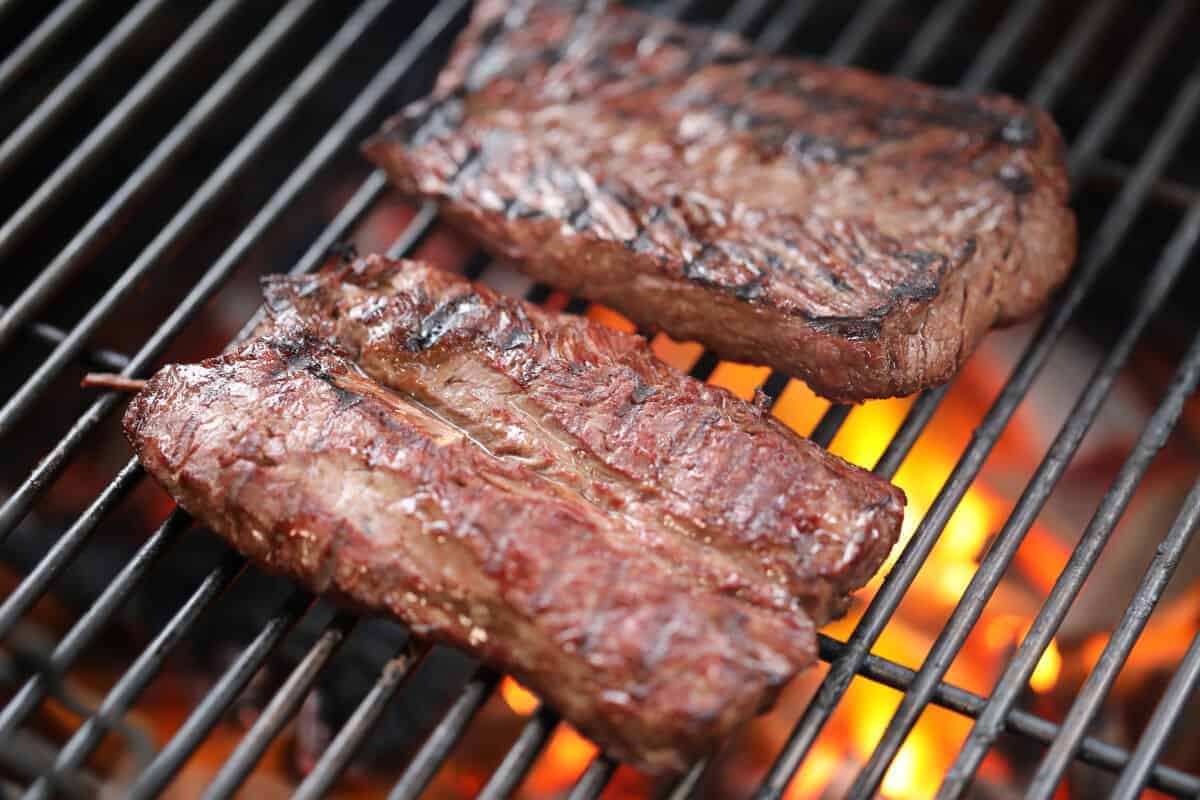
Either you had no choice, or you actually wanted a thin steak. Either way, you want to make the best of your skimpy steak. It’s doable! Just follow these steps:
- Preheat your grill until it’s as hot as humanly possible.
- While the grill heats up, season your steak, if desired.
- Place the steak on your preheated grill.
- After about 60 seconds on the grill, give the steak a quarter-turn (this creates restaurant-style grill marks and helps even out the sear) and leave for another 60 seconds.
- Flip the steak and move to a new part of the grate that hasn’t had any heat absorbed from it yet.
- Repeat step 4.
- Remove from heat.
- Rest your steak away from the heat for 2 to 3 minutes.
Checking the temperature inside a thin steak isn’t easy, and it may not be worth your while. There’s virtually no possibility of undercooking a thin steak following these instructions.
If you’re a charcoal griller and happen to own a charcoal chimney starter (which you absolutely should!), you can try the afterburner method made famous by Meathead Goldwyn, the man behind AmazingRibs. Here’s how it’s done.
- Load your chimney halfway with charcoal and ignite as usual.
- Place a small barbecue grate over the top of the chimney, thereby creating a small grill.
- While the grill heats up, season your steak, if desired.
- Place the steak on your preheated grill.
- Flip after about 60 seconds to sear the other side.
- Flip frequently for about 2-3 minutes total.
- Remove from heat.
- Rest your steak away from the heat for 2 to 3 minutes.
The temperature at the top of a chimney can be as high as 800 °F, so you need to be on top of the situation at all-times. Even a few moments of distraction can lead to total incineration of your steak. Not good.
The one drawback of the afterburner method is the small grill size. You will only be able to cook one steak at a time, so you might want to reserve this method for a time when you’re only cooking for yourself or perhaps one other person.
No one needs a backyard full of hangry friends and family!
Final Thoughts
When you love steak as much as I do, you’ll always find a way to make the best of whatever cut you’ve got.
Choosing the proper cooking method, seasoning and marinating, tenderizing — there is always a workaround for a steak that’s less than ideal in some way. But, now that you know 1.5 inches is the best thickness for steak, you can go ahead and buy with confidence.
Can’t get enough steak? Stick around for lots more content about perhaps the most beloved cut of meat ever to grace our grills. Open the search bar at the top of the page and type in “steak” for dozens of articles covering how to choose, prepare, and cook the perfect steak time after time.
Thanks for sticking with us through thick and thin — now, go enjoy some steaks!


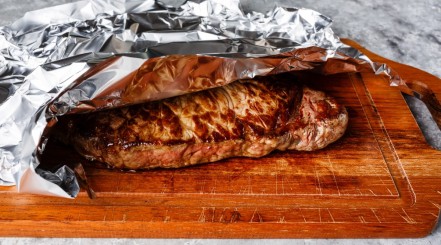

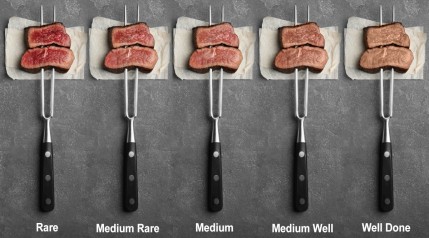
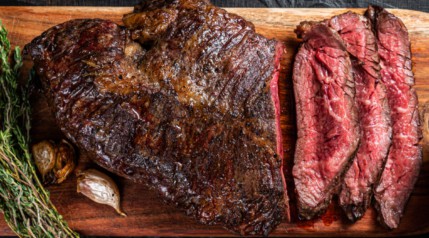
I appreciated your perspective on the the different cuts of steak. Thank you for sharing.
Thanks, Robert.
I grilled for years with a basic Weber Kettle in California; had great results using the grilling guide that came with the kettle. I lost that little booklet when I moved to New Zealand. And I had to learn a new beef vocab: Scotch Filet (pronounced Fill it here), prime rib is not offered in restaurants. But since I’m getting half a beef for the freezer, this article helped me remember the right thickness. You can’t find thick steaks here at the supermarket, you have to go to an independent butchery. My neighbour raises beef cattle so now I’m Griller Heaven.